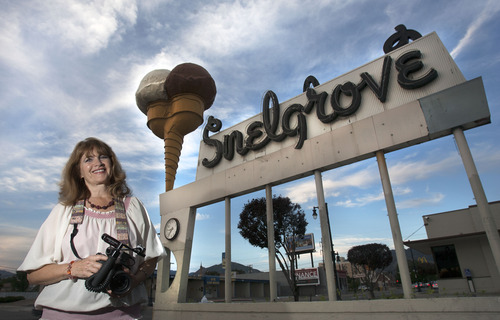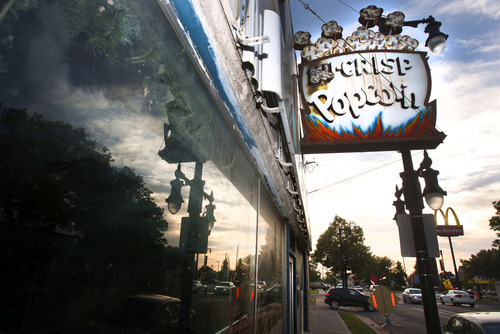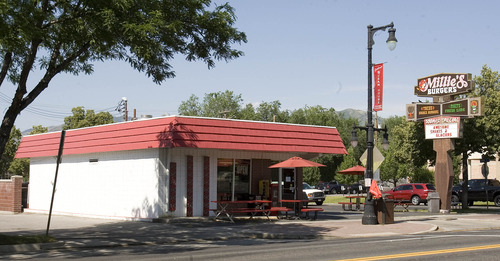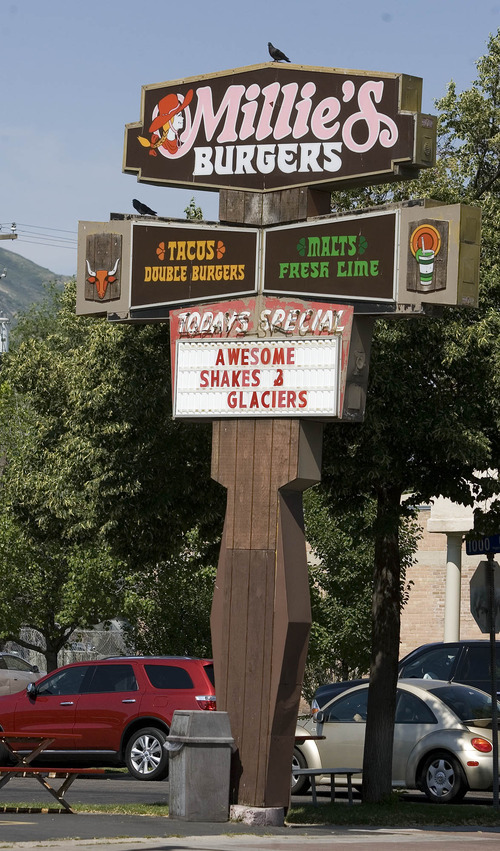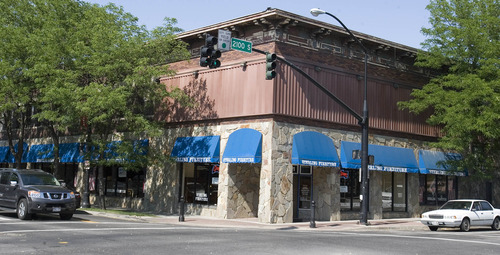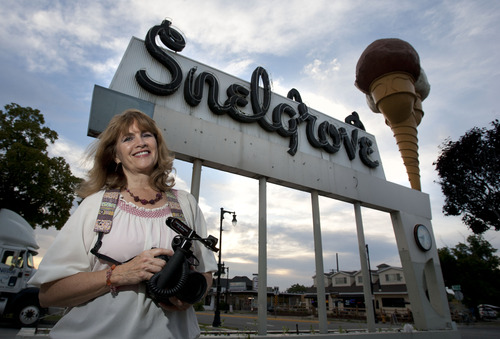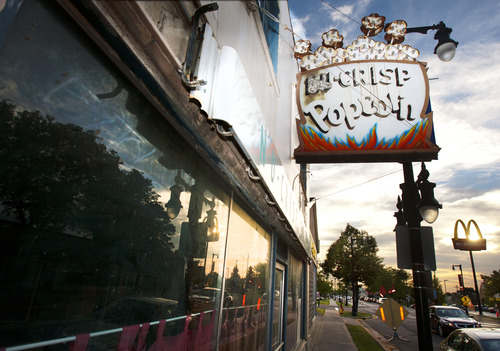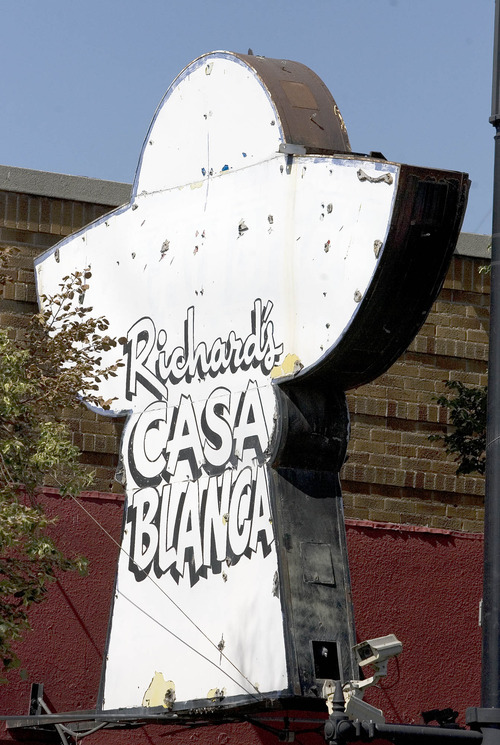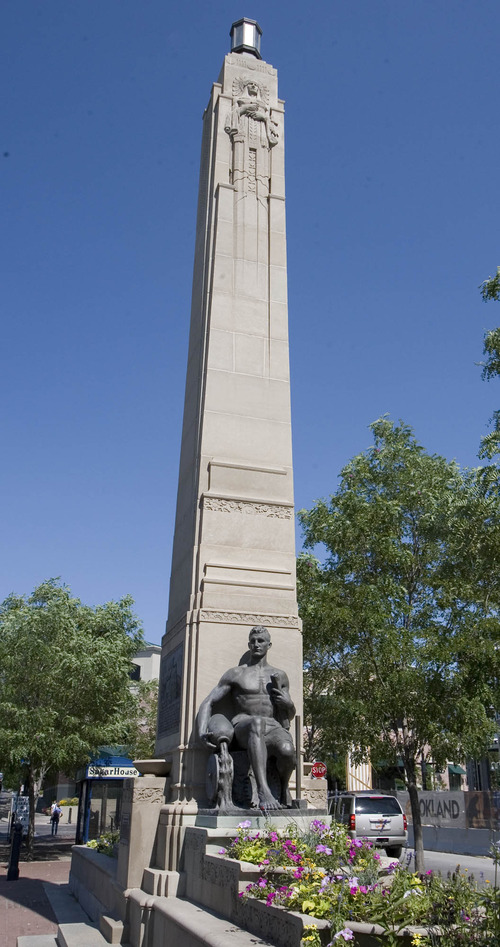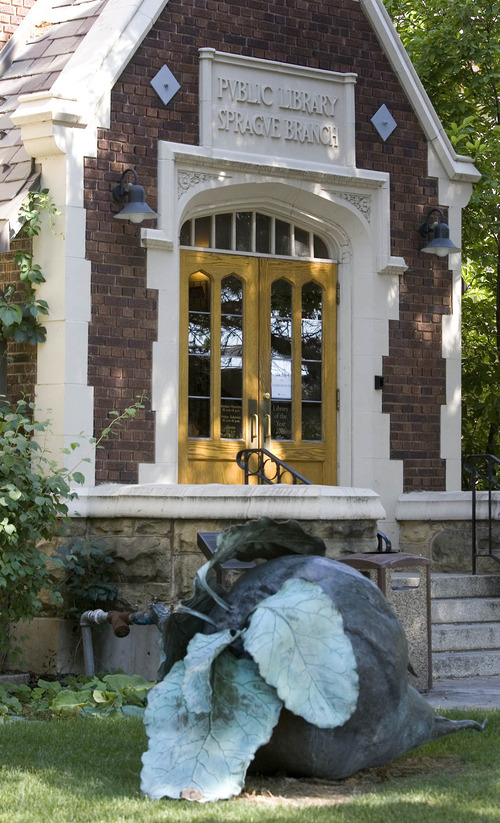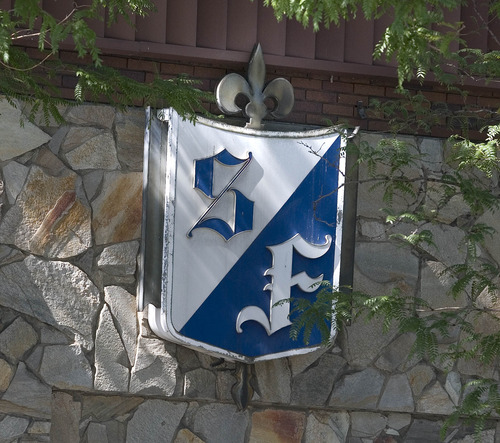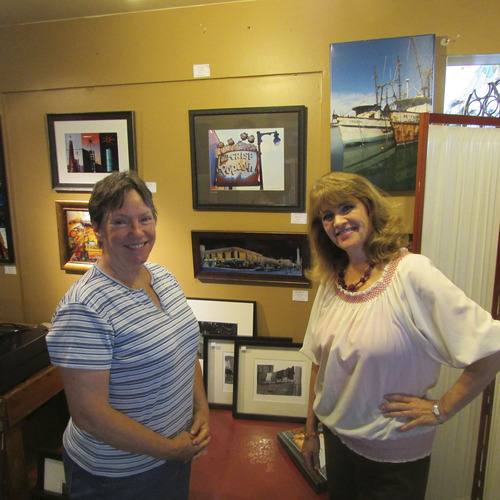This is an archived article that was published on sltrib.com in 2013, and information in the article may be outdated. It is provided only for personal research purposes and may not be reprinted.
The Granite Furniture "Sputnick," Snelgrove's giant ice cream cone, the neon knight on the old Salt Lake Costume Company building and the electric sombrero on what was the Tampico restaurant serve as aging and iconic Sugar House landmarks.
Yet, due to age, changing business addresses and a restrictive sign ordinance, preserving them has become more difficult. The Deeburger Clown and Pine Cone signs exist only in the old photos and memories of an aging population.
"One of the things that shaped and defined the character of 2100 South was the interstate traffic that passed through it," said Lynne Olson, unofficial Sugar House historian and long-time activist. "Business owners cleverly designed buildings on motor lodges and drive-in restaurants to encourage travelers to stop."
To help preserve the remaining signs, the Sugar House Community Council has worked with Hawthorne Elementary's Kids Organized to Protect Our Environment club, and members will pass out a new brochure about the history of the area's iconic markers Thursday at the 150-year-old business district's annual July Fourth celebration.
Laurie Bray, a Sugar House-based photographer and chairwoman of the community council's arts and culture committee, said when she organized art walks for area studios, she would often get a blank look when she told patrons that many of them were located near the Sugar House monument. But when she said they were under the Granite Furniture "Sputnik," they immediately knew where to meet.
"We will be passing out the brochures at the community council booth and at my booth," Bray said. "We are doing a survey asking people what signs they would like to see restored."
The Sugar House Community Council recently received a $10,000 grant from the Salt Lake City Redevelopment Agency that can be used to restore and preserve historic signs in the town center. Property owners who want to participate must match the grant with an equal amount and are expected to maintain the restored signs.
Salt Lake City's sign ordinance, designed to preserve views of mountains and other buildings, makes it difficult to preserve some of these historic artistic signs. Those that do not follow the rules can stay until the owner takes them down. If they are removed, new signs must meet the rules in the ordinance. Since repairing them in place can be dangerous and difficult, many fall into disrepair.
Ray Milliner, principle planner for the Salt Lake City planning division, said that while the city council recently adopted design guidelines for signs in historic areas, some adjustments are needed.
"We allow for maintenance, but when someone decides that a sign is lame, takes it down and puts it into a garage and then decides 10 years later that it was pretty cool and they want to put it back up is where you run into problems," he said.
Salt Lake City Council member Soren Simonsen, who represents the Sugar House area, said it took two or three months for Boulder Ventures Development to get permission to refurbish and upgrade the Granite Furniture sputnik sign to reflect the new businesses in the building. He thinks the current ordinance needs to be tweaked to allow the signs to be fixed or slightly altered.
"There is a lot of interest in trying to be more permissive with updating signs and changing logos but still preserving the look and feel," he said. "I would love to see some new signs with the same look and feel. They are character-defining."
Simonsen said the council might even consider carving out a district such as Sugar House where some of the older-looking neon signs, even if new, would be allowed to create a new feel.
The problem is that the historic electric signs fall under the same ordinance being used in an attempt to stop the proliferation of the more modern LED video billboards.
Another problem signs such as the Snelgrove's ice cream cone or the Nu-Crisp popcorn icon might fall into disrepair or be taken down when new ownership takes over. For example, the Smith-Crown sign is in storage because of difficulties with the ordinance placing it on a new building just up the street.
The Sugar House Community Council wrote in its report that these signs built in the 1950s and '60s "are reminders of times that older residents cherish. Younger people and new visitors see the signs as distinctive works of art, and effective way-finding tools."
The KOPE club, in its problem-solving class on the sign issue, said historic signs should be protected even if they are on buildings that aren't legally historic buildings or in historic districts. They said new businesses should be allowed to change the signs and that keeping the historic signs help promote tourism.
Twitter @tribtomwharton —
Signs of Sugar House
Nu-Crisp Popcorn Shop, 960 E. 2100 South
Smith-Crown Company, 1941 S. 100 East
Stark Steering Automotive (Now Ldi Group), 1075 E. Hollywood Ave.
Tampico sombrero sign (now Club Karamba), 1049 E. 2100 South
Millie's, 2092 S. 1000 East
Sterling Furniture, 2051 S. Highland Drive
South East Furniture Compass (salvaged in 2008 for use in a new monument plaza), currently in storage
Salt Lake Costume Company (Now Arendal Kitchen Design), 1701 S. 100 East
Snelgrove Ice Cream (now Dreyer's Grand Ice Cream), 850 E. 2100 South
Ace Automotive (now Rudy's Keys), 2040 S. 1000 East
Sprague Branch Library, 2131 S. 1000 East
U.S. Post Office Sugar House Station (now Caterina), 2155 S. Highland Drive


